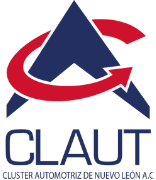- News,
Digitalization reaches metalworking
What represents an irreversible trend is that machine tools are becoming hybrid equipment between mechanical and digital. This cyber mechanism will gain an increasingly transformative force in metalworking manufacturing.
The metalworking industry, an unambiguous conceptual field of machinery and mechanical systems designed to transform and produce metal components, is moving towards an era increasingly oriented towards information systems and articulating digital systems that add control and visibility to manufacturing processes.
Through gateways, such as computerized numerical control (CNC) equipment, peripheral machines and equipment now coexist more closely with management and analytics applications in Internet-based environments.
The integration of CNC components into the information technology ecosystem of a manufacturing process significantly improves efficiency, quality, and operational intelligence. This, in turn, translates into clear improvements in each project’s productivity and profitability, which are increasingly demanding and directly impact profitability margins.
This is relevant throughout supply chains, as customers demand quality, stricter delivery times, flexibility in production orders, and, of course, better costs.
Machines with data
Laser cutting machines and presses with CNC servo motors, for example, represent two of the most advanced and efficient technologies in the metalworking industry. This is due to the advanced generation of algorithms aimed at making the operation more efficient.
CNC laser cutters can make precise cuts and handle fine details and minor bends. This results in a clean finish that often requires no additional polishing work.
In addition, the programming systems optimize the cutting patterns to the maximum. Using specialized software, the most efficient way to arrange the figures to be cut is calculated, making the most of the available space on the sheet and reducing unnecessary cuts. This process, known as nesting, is clearly one of the digital advantages most frequently referenced by machinery suppliers.
When it comes to die-cutting operations, electric presses, which also have CNC controls, offer smoother movements than their mechanical counterparts. As they are electronically controlled, they can be used at a higher speed but are controlled and variable, which allows for more precise work. In addition, compared to a mechanical press, they have less loss of inertia.
On this equipment, the Human Machine Interface (HMI) panels are becoming more user-friendly. They allow adjustments to be made more quickly and display accurate information on the performance of the stampings made from each part and each blow made.
This allows information to flow not only as an object of continuous and safe production for the parts, which run less risk of fracture when receiving impacts with variable speeds, but also allows access to statistical data that can be later analyzed both for production improvements and for maintenance tasks, to mention examples.
The precision of the movement and the force applied allow for high-quality work with minimum tolerances, quick configuration changes, and precise adjustments for different jobs and materials.
Another benefit is that due to their added electronics, servo motors only consume power when moving, which can result in lower energy utilization compared to traditional machines.
Metal & Digital Links
Digitalization is also significantly impacting welding. The new equipment allows detailed data to be collected on welding parameters in real time, such as welding current, voltage, wire feed speed, and arc duration. This information is critical to ensure weld quality and precise adjustments that improve process consistency and efficiency.
Advanced welding systems use sensors to monitor the stability and quality of the welding arc. Data on arc shape, energy, and fluctuations can be collected to identify problems in real-time and automatically adjust parameters to maintain weld quality.
Temperature monitoring in the weld zone and surrounding areas is crucial to prevent deformation and ensure the structural integrity of welded parts. Thermal sensors generate data that can be used to fine-tune the process to avoid overheating or rapid cooling.
Another increasingly present feature is machine vision, as well as other automated inspection systems, which generate data on the quality of welds, including detecting defects such as porosity, slag inclusions, and lack of melting. These systems allow for fast and accurate evaluation of workpieces without manual post-process inspection.
The new welding systems collect data on consumables, such as welding wire and shielding gas. This information is vital for inventory management, production planning, and cost control.
Collecting data on environmental conditions, such as humidity and ambient temperature, can significantly influence weld quality. This data allows adjustments to welding parameters to compensate for ecological variations.
By collecting data on operator-machine interactions, including manual settings and operating preferences, users have information that can be used for training, to improve ergonomics and user interface, and to customize the machine to the operator’s specific needs.
Digital Trend
Both welding and CNC machinery are clear examples of how digitalization impacts the metal forming and manufacturing industry. Therefore, we could consider, without any exaggeration, that we are already at the dawn of a new era of manufacturing, where automation, analytics, and even artificial intelligence will be fundamental pillars of production.
Generating accurate real-time data is becoming an invaluable tool with constant and detailed operations monitoring. Around all this, metalworking production environments are flooded with equipment equipped with advanced sensors to collect information on critical indicators such as cutting speed, tool load, temperature, and vibrations. This facilitates comprehensive monitoring of the machine’s condition and ensures the quality of the final product.
The collection and analysis of this data open the door to optimizing processes in real time. Machine learning algorithms and artificial intelligence are used to make dynamic adjustments in the cutting and operation parameters, always seeking to maximize efficiency and minimize tool wear and energy consumption. This adaptability not only increases productivity but also extends the life of the equipment.
In this regard, predictive maintenance emerges as another significant advantage, where the information generated by CNC equipment is used to anticipate failures before they occur. Deep analysis of real-time and historical data is helping to identify predictive patterns of failures, opening up the scheduling of preventive maintenance, which significantly reduces unplanned downtime.
Integrating intelligent manufacturing systems such as MES and ERP further boosts production capacity. This synergy improves the management of production and resources, allowing information to flow throughout the entire value chain. The result is data-driven decision-making that effectively responds to market demands and optimizes available resources.
With digitization, the data generated by CNCs facilitates advanced quality control. The continuous comparison of the dimensions and characteristics of the parts produced with the design specifications ensures compliance with the quality standards set by the customers.
The new CNC equipment’s ability to quickly adjust to different configurations and designs based on digital information opens up a range of possibilities for customized and small-batch production.
This adaptability is crucial in a market increasingly oriented towards customization and with demands for fast deliveries, representing a competitive advantage for companies that adopt these advanced technologies. More clearly, digitalization is not just a trend in the metal forming and fabrication industry but a necessary evolution to redefine the boundaries of what is possible in metalworking production.


















































